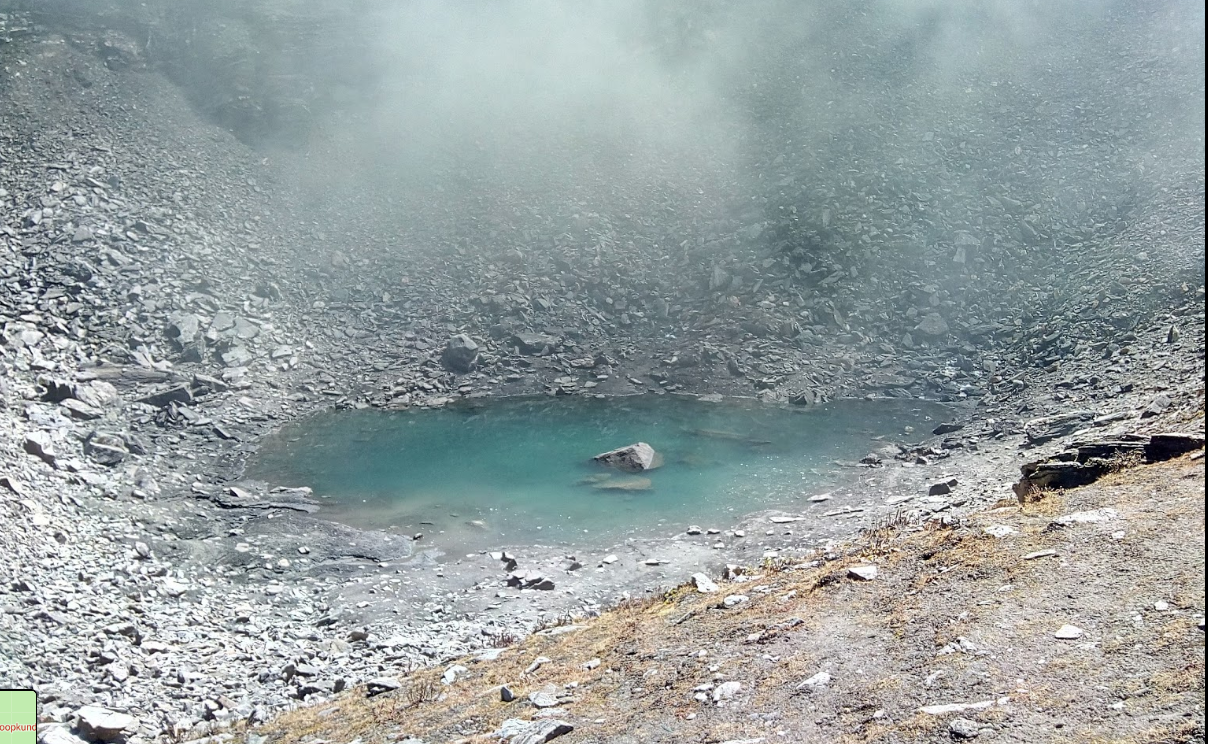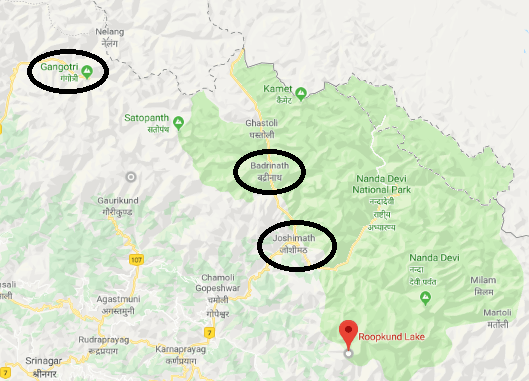Decade long study decodes the mystery of Roopkund Lake Skeletons

Roopkund lake is an amazing place. Ensconced in the higher reaches of the Himalayas in Uttarakhand, this lake is often known as Skeleton Lake or Mystery Lake. It has skeletons near and within it. No one knew whose they were and how they got there. Were they of one group and from the same time period or different times?
In a large-scale study conducted by an international team of 28 researchers from institutions in India, the United States and Europe, the DNA information was studied to get the answers.
When the team sequenced the mitochondrial DNA of 72 skeletons, they were astonished. While the majority of the skeleton possessed the mitochondrial haplogroups of modern-day Indians, there was specimen with haplogroups typical of West Eurasian populations. 23 individuals turned out to have the genome related to modern day Indians. The next largest group seems to be from Eastern Mediterranean region (present day Crete and Greece). The third and smallest group seems to be from Southeast Asia.
Radiocarbon dating indicates that the skeletons were not deposited at the same time, as previously assumed. Instead, the study finds that the two major genetic groups were actually deposited approximately 1000 years apart. First, during the 7th-10th centuries CE, individuals with Indian-related ancestry died at Roopkund, possibly during several distinct events. It was not until sometime during the 17th-20th centuries that the other two groups, likely composed of travelers from the eastern Mediterranean and Southeast Asia arrived at Roopkund Lake. ” (Source: Biomolecular analyses of Roopkund skeletons show Mediterranean migrants in Indian Himalaya — ScienceDaily)
This is interesting. If one looks at the Roopkund lake, it is very close to some of the most revered pilgrim areas in the Himalayas – Badrinath, Joshimath, Hemkund, Gangotri.

For people of very diverse origins to come there and do so while being apart 1000 years in their time of existence, shows that it has been a place of great pilgrimage. It could also mean that some Himalayan teacher and his/her lineage of teachers were conducting Sadhana or Spiritual work there.
After all, Crete and Greece of the 17th century were seeing the take over by the Ottoman Empire. And many of the Greek philosophical schools had been working secretly and underground after the Christianization of the area. This was the time for the exodus of Christians from that area.
The SouthEast Asian region could very well be Cambodia or area near by. Cambodia was the site of Khmer or Angkor Hindu Empire from the 7th century to almost the 17th century.
The diets of the groups from the Indian and Mediterranean lineages comprised of C3 and C4 foods (basically plant based). That would be consistent with someone on a pilgrimage as well.